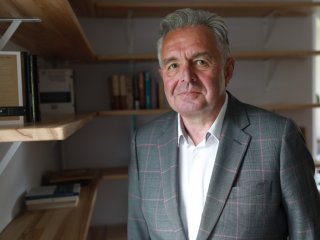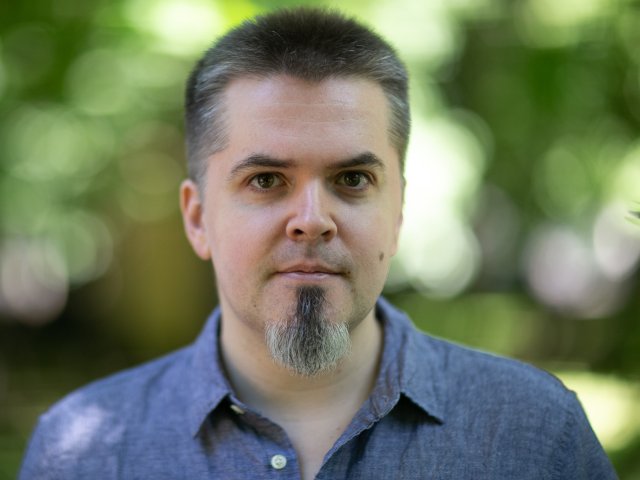What are severe mycotic infections? How can they be recognized and treated in time? Why are there more of these diseases now, amidst the pandemic of a new coronavirus infection?
Nikolay Nikolaevich Klimko, the head of the department of clinical mycology, allergology and immunology of North-Western State Medical University named after Mechnikov, discusses this issue.
– Nikolay Nikolaevich, I know that you have literally been crying out about the hidden threat of mycotic infections for many years, and that we have several million people in our country suffering from severe or chronic mycoses. What has changed today, during the era of the new coronavirus infection?
– Unfortunately, in the era of the new coronavirus infection, the number of patients with severe mycoses has increased. There are several reasons for this. Firstly, the coronavirus infection is severe itself, the patient is often forced to stay in the intensive care unit. Severe coronavirus infection is characterized by powerful immunosuppression, and the damage to both local and systemic mechanisms of immune defense. This can result in severe life-threatening infections caused by unusual pathogens, including micromycetes. The situation is aggravated by the very extensive use of systemic glucocorticosteroids and biological immunosuppressants.
It must be said that, no doubt, these medications help many patients, especially those who need inhalation therapy. But their use also negatively affects the systemic immune defense. In this situation, there has been a significant increase in fungal pneumonia called “invasive aspergillosis” and fungal sepsis called “invasive candidiasis”.
Moreover, an increase in the number of these infections has been noted worldwide. In particular, experts from the European Confederation for Medical Mycology (ECMM) prepared recommendations for diagnosing and treating invasive aspergillosis, which is the fungal pneumonia among patients with COVID-19. This study was published last November in the Lancet journal. The number of publications on this topic is growing very fast.
– Do our country scientists conduct patient studies to detect these abnormalities in time?
– Absolutely, they are being conducted. We published an article in the Journal of Infectiology, which was the first description of cases of invasive aspergillosis in COVID-19 patients in our country. We described the situation of last June, exactly one year ago, when one of the centers was actively detecting fungal pneumonia – invasive aspergillosis. They were actually consulting with us on the best way to do this. Naturally, we register all the patients we consult, as well as those with invasive mycoses, confirmed according to international criteria.
– Do ordinary pneumonias, not covid ones, have about the same complications, or is there anything specific about covid pneumonia?
– During common pneumonias in immunocompetent patients, we almost never see fungal infections. Fungal pneumonia sometimes accompanies severe influenza in patients in intensive care units. The incidence of invasive aspergillosis in such patients is about the same as in COVID-19 ventilated patients, about 20%. This is a very high rate.
– How dangerous is this complication for the patient?
– If we treat fungal pneumonia, according to some studies, the mortality rate increases by 16%, and by 25%, according to another study. In other words, if a patient develops invasive aspergillosis, the mortality rate increases significantly, that is statistics.
– And if we don’t treat it?
– If we do not treat invasive mycoses, they are almost always lethal. Theoretically, it is possible to quickly restore the immune defense mechanisms, and the patient will survive. But in general, without treatment, all cases of invasive mycoses end unfavorably.
– What is advisable to do in such a situation? What is the best course of action for doctors in this situation?
– The first thing we should understand is that this problem is real. If doctors know about the possibility of developing invasive mycosis in a particular patient, then everything is relatively simple. If we are talking about fungal pneumonia – it is very important to know that this complication usually occurs in COVID-19 patients with concomitant diabetes mellitus, or oncological or hematological disease. Additional risk factors include the use of high doses of systemic glucocorticosteroids, immunosuppressants, prolonged treatment in the intensive care unit, use of mechanical ventilation, and low peripheral blood lymphocyte counts.
It is necessary to know the clinical signs of suspected invasive pulmonary aspergillosis. As a rule of thumb, this is progressive respiratory failure despite adequate treatment of the patient in question. The second typical sign is fever that does not respond to broad-spectrum antibiotics, or a recurrence of such fever. The next signs are hemoptysis and chest pain. If we see such clinical signs in a COVID-19 patient with the specified background disease and risk factors, then we need to act quickly.
– How exactly we should act?
– We need to either rule out or confirm the presence of invasive pulmonary aspergillosis. It's relatively easy. We do a CT scan or lung radiography; in case we cannot do a CT scan due to the severity of the condition. And if we find any changes progressing, new infiltrates or infiltrates with destruction, we have to do a bronchoscopy.
The curious thing is, about two years ago, many national and international medical communities said that using bronchoscopy in such patients is dangerous for the endoscopist – the person who performs this study. But then, with the accumulation of information, it became clear that this is a safe procedure, which can be easily performed as long as the patient is not too severe.
Therefore, it is important to detect invasive mycosis in time, do bronchoscopy and obtain material from the damaged segment of the lung. After that, we send it to the laboratory, where we have to do only three tests: test for galactomannan in bronchoalveolar lavage fluid, microscopy with staining, and mycological culture analysis. The test for galactomannan is registered for use in the Russian Federation and is now available. Microscopy and culture analysis are not difficult to do, but you need qualified doctors-microbiologists. A positive result of one of these three tests is a diagnosis.
We know the drugs of choice for the treatment of invasive aspergillosis with proven efficacy and safety. They are all registered in our country. They are widely used. There are domestic and foreign generics of one of the drugs of choice.
– Nikolay Nikolaevich, previously we talked about the lack of specialists like you in our country. There is an acute shortage of mycologists. I know that many mycology centers have closed. What is the new challenge in this situation in the context of the growing number of mycoses against the background of COVID-19 growth?
– Many doctors who treat patients with the coronavirus infection already know this all. There are recommendations issued. We have drafted our proposals and sent them to the Ministry of Healthcare. That is, those who want to do this and understand the degree of danger of opportunistic infections, hospital-acquired infections in COVID-19 patients, and fungal infections, have no difficulty.
However, much to our great regret, when we look at the results of pathological examinations of deceased patients, we often see that cases of fungal infection, fungal pneumonia, or fungal sepsis were revealed only postmortem. Alas, we are not unique here.
– Could you tell us, can these symptoms of fungal infections occur only in serious patients who are hospitalized, or can they also occur in those who are treated at home?
– Fungal pneumonia and fungal sepsis almost never occur in patients who are treated on an outpatient basis. We know that in half of patients this infection is either asymptomatic or has minimal symptoms, and the really severe ones are about five percent. Those are the patients who are in the hospital or in the intensive care unit, who have been additionally treated with systemic glucocorticosteroids and biological immunosuppressants – this is the cohort of patients who are vulnerable in terms of developing severe fungal infections.
– We've realized what doctors need to do: they need to be interested in the latest medical news, read the medical literature, and listen to you. And what should patients do so that they don't miss the first symptoms of these kinds of complications?
– First of all, you have to be vaccinated. This is the best way to avoid severe complications and the severe course of coronavirus infection, this is my deepest belief. The second thing is hospital-acquired infection, patients who are supervised by doctors. Basically, a severe patient cannot adequately assess the situation. But probably these are the symptoms that I have already mentioned – progressive respiratory failure, despite the adequate therapy and relapses or continuous fever, despite the use of broad-spectrum antibiotics. This is where you have to sound the alarm.
– And if we speak not only about COVID-19 – what symptoms should people pay attention to, even if they do not have a coronavirus infection, in order not to miss the onset of mycosis?
– I would like to emphasize that after all, the severe fungal infections that we are talking about are the prerogative of patients with comorbid conditions, in other words, patients who have other serious illnesses. These are not just ordinary patients, but rather those who have been receiving glucocorticosteroids for a long time, or patients who have been treated, for one reason or another, with biological immunosuppressants, and their number is increasing very rapidly. They are extremely widely used in, say, the treatment of cancer or rheumatologic diseases. And if these patients have pneumonia or fever of unclear etiology, and the standard treatment does not help, then we have to think about the possibility of infection caused by so-called opportunistic pathogens. In this case, of course, you need to go to specialists who understand how to identify these infections and how to treat them.
– You say the antibiotics don't work anymore. But this could have been caused by antibiotic resistance.
– Absolutely. But I don't repeat it for nothing – adequate antibacterial therapy. Fungi are always second, bacterial or viral infection comes first, and only then does a fungal infection occur. What we usually see is – an antibiotic is prescribed, everything is fine, everything is going in a positive direction. But after two, three, four days, the fever relapses. Of course, that could be resistant bacterial pathogens. We are well aware of the importance of this problem. But it can also be special pathogens. Among other things, it could be fungal pathogens.
– Nikolay Nikolaevich, how unique is your medical institution, your department of mycology at St. Petersburg University namely?
– We have the Department of Medical Mycology, Allergology, and Immunology, and we have the Institute of Medical Mycology named after Pavel Nikolayevich Kashkin. It's quite a unique medical institution. We are the only specialized institution in our country that is, in fact, a reference center. People address us not only from all the cities of our vast country, but from other countries as well. We also consult and treat patients from foreign countries and the former Soviet Union. This is why we are quite unique.
But on the other hand, I know that not only in St. Petersburg and Moscow, but in other cities as well, there are medical institutions where you can get good diagnosis and treatment of severe fungal infections. The fact is that there are certain groups of patients for whom this problem is extremely urgent. This includes oncohematology, hematopoietic stem cell transplantation, organ transplantation. This is neonatology – premature newborns with extremely low body weight, some other patients. And the doctors who treat these patients, by and large, are aware of it. They know how to diagnose the main types of severe fungal infections.
– Can we say that the COVID-19 pandemic has aggravated this problem?
– Definitely. You have seen numerous publications about cases of mucormycosis, which the press calls the Indian black mold. These articles are devoted to the problem of mucormycosis in COVID-19 patients. This is a real problem that many people have taken notice of. The specialized medical communities, such as the European Confederation for Medical Mycology or the Global Mycosis Foundation, have issued a huge number of statements on this topic. I read articles almost daily in scientific journals about opportunistic infections in general and mycoses in COVID-19 patients specifically. So, yes, the problem is even more acute than before, and it's good that it's getting the most attention.
In any case, it is important to know where to go if you have any questions about the diagnosis and treatment of fungal infections – in COVID-19 patients and any other patients. So please contact our Institute of Medical Mycology, contact the Department of Clinical Mycology, and contact me personally. My email address, phone numbers are known, they are on the Internet. I will always be glad to help.
Nikolay Nikolaevich Klimko, the head of the Department of Clinical Mycology, Allergology and Immunology of the North-Western State Medical University named after Mechnikov































